6 /10 1 Votes
6.4/10 TV Availability 1995–1997 Final episode date 21 February 1997 Number of episodes 26 | 5.6/10 IMDb Type Action Figures Country United States First episode date 23 September 1995 Number of seasons 2 | |||||||||||||||||||||||||||||||||
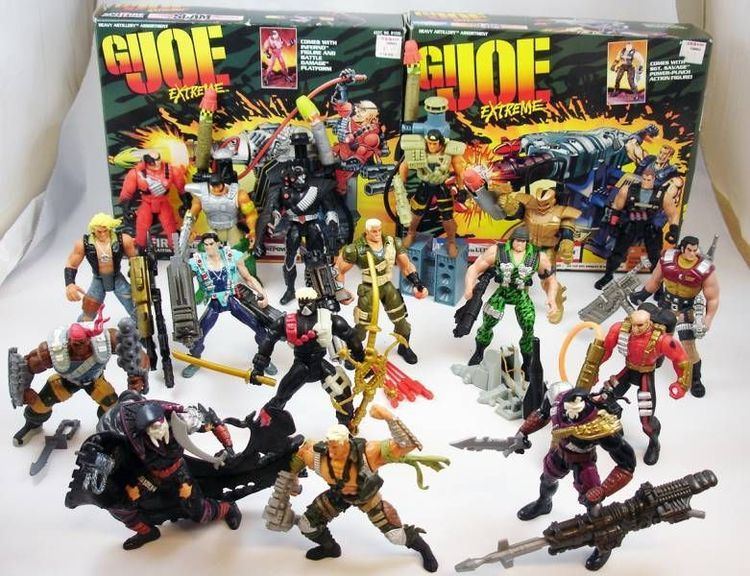 | ||||||||||||||||||||||||||||||||||
Slogan "Extreme times call for extreme heroes!" Genres Animation, Animated series Cast Similar GI Joe: Sigma 6, GI Joe: A Real American, GI Joe: Resolute, GI Joe: Renegades, The Puppy's Further A | ||||||||||||||||||||||||||||||||||
G.I. Joe Extreme is a line of military-themed toys that was sold in retail from 1995 to 1997. The toys were produced by Kenner following their acquisition by former competitor Hasbro and was intended to succeed the G.I. Joe: A Real American Hero line, which was discontinued the previous year. It was supported by a syndicated animated series that ran for two seasons and a series of comics.
Contents
- Toyline
- Carded figures
- Vehicles and playsets
- Other toys
- Unreleased products
- Cartoon
- Comics
- GI Joe Team
- SKAR Soldiers of Khaos Anarchy and Ruin
- Non Aligned characters
- References
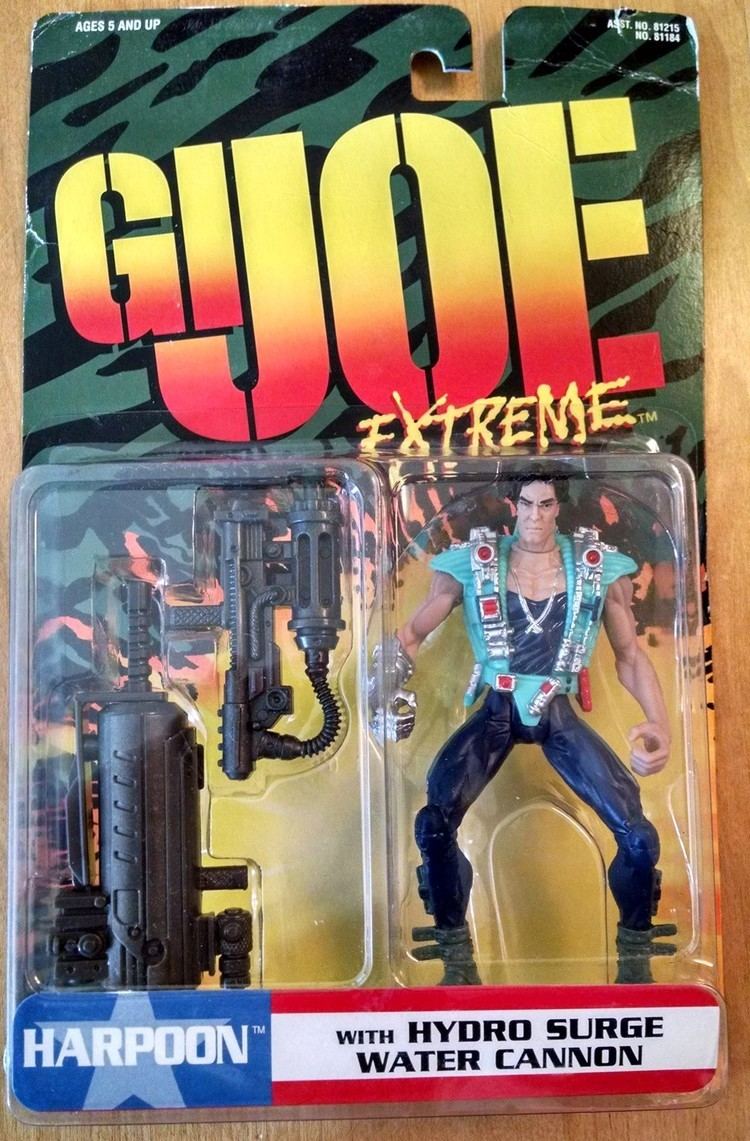
The line features a storyline quite similar to the A Real American Hero line. In a "near-future" continuity, a new G.I. Joe Team fights to stop a rising terrorist organization called "SKAR" (Soldiers of Khaos, Anarchy and Ruin) and their leader, a mysterious, shrewd, and incredibly powerful military leader only known as "Iron Klaw".
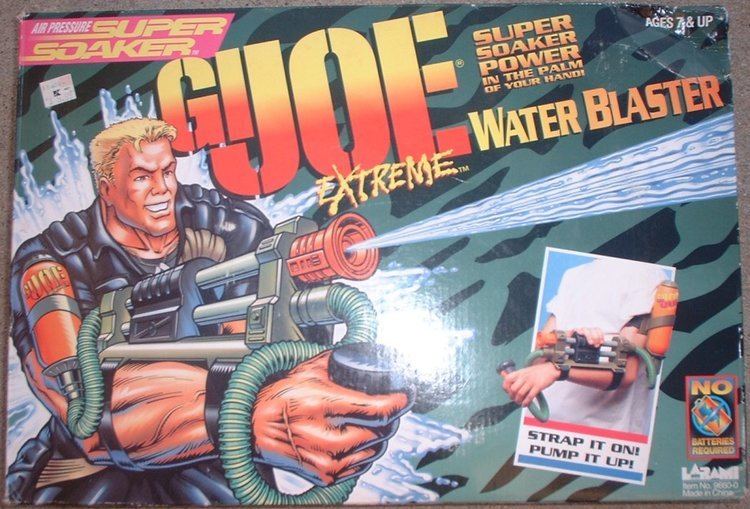
Toyline
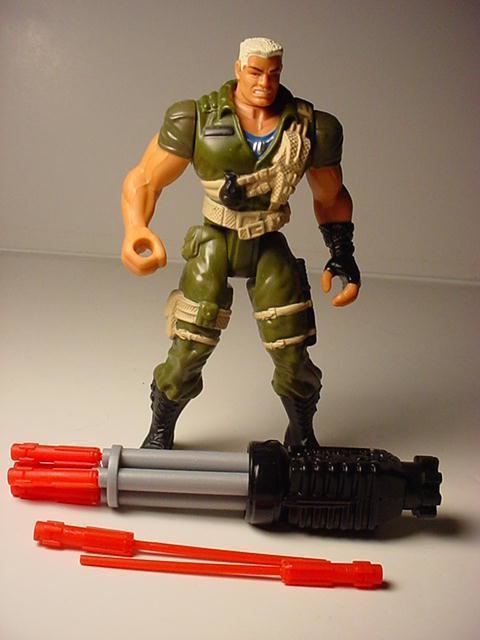
The title logo was reminiscent of the original G.I. Joe logo from the 1960s and 1970s. The 3.75" scale was discarded in favor of a new 5" scale, which allowed a greater level of detail especially in the facial and muscular features. However, the line was criticized by collectors for replacing articulation with "special feature" gimmicks compared to the Real American Hero line.
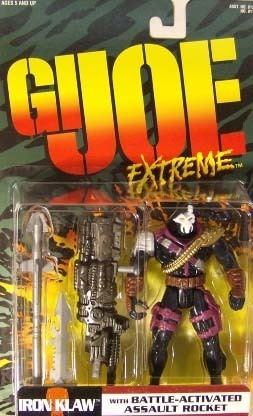
Carded figures were released in two varieties, basic figures and deluxe figures. The deluxe versions of the figures, which were advertised as featuring "Ultra SLAM Firepower", came packaged with a backpack accessory connected to a missile launcher via a tube. The launcher shoots its missiles by lowering the plunger on the backpack. A single two-pack was also released. The vehicles and playsets were also advertised with "Ultra SLAM Firepower".
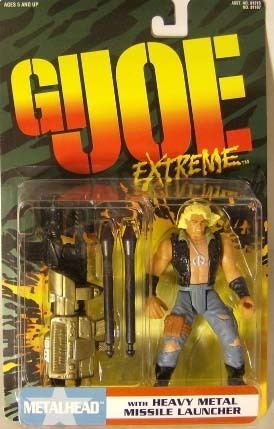
The Extreme line never approached the success of the Real American Hero line and was canceled after its first wave. A second wave of figures and playsets was showcased in Toy Fair '96, but only two figures (Black Dragon and Harpoon) were given full releases. The rest, which included Mayday (the sole female Joe in the Extreme lineup), were shelved.
Carded figures
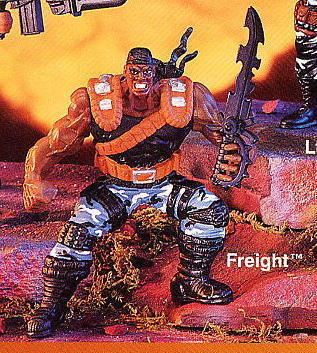
Vehicles and playsets
Other toys
Unreleased products
Cartoon
The G.I. Joe Extreme series was produced by Sunbow Entertainment (who co-produced the first G.I. Joe TV series) and Gunther-Wahl Productions and distributed by Claster Television. Set in the (at the time) "near future" of 2006, the show's main threat is a new, emerging terrorist organization called SKAR led by Iron Klaw, the former count of an eastern European country.
According to the one-minute intro (which resembles a news flash), a "former super-power" has collapsed with several factions vying for control against a new global terrorist organization "known only as SKAR" whose goal is nothing less but total world domination. Iron Klaw claims: "We will be VICTORIOUS!" to which Lt. Stone replies "Not on MY watch!" followed by an introduction to the new Joe roster. The opening concludes with a news reporter giving odds of survival as "a million to 1" and Stone yelling: "...and that's the way we LIKE it!" Season 1 with a one-minute intro with all of the live-action segments during the beginning of all the episodes, Season 2 with a thirty-second intro during Friday's The Power Block.
The new Joe team operates in a post-Cold War world wracked by chaos and carnage, and battling against both SKAR and independent mercenaries, who seek to further destabilize an already unstable world. Unlike the previous series, the cartoon featured a pre-credits teaser featuring a mixture of both live actors and CGI. However, as with the previous series, the end of the episode featured new public service announcements in the same vein as the popular "Knowing is Half the Battle" PSAs.
Comics
Dark Horse Comics acquired the G.I. Joe comic license in 1996. The initial four issue mini-series, simply titled G.I. Joe (which featured the tagline "extreme times call for extreme heroes!" on the cover of each issue), was written by Mike W. Barr, with art by Tatsuya Ishida and Scott Reed. The cover to the first issue (The Hour of the Iron Claw) was done by Frank Miller, the second issue (Pawn of the Iron Klaw) by Norm Breyfogle, and issues three (The Gang's All Here) and four (The Ultimate Price) by Walter Simonson. The plot of the mini-series revealed events that occurred after the ones depicted in the television series, but also contradict them on several points, notably in that Iron Klaw is, at the very beginning, the second-in-command of the military wing of SKAR. The original leader was a woman named The Duchess of M'Klavia, who wanted her royal line to regain control of her country’s government through whatever means necessary. She was assassinated by Iron Klaw, when he became more ambitious and craved for world domination. At this point, the new Joe Team included two new members, Short Fuze (unrelated to the character of the same from the A Real American Hero series) and Tall Sally.
The mini-series led to an ongoing series following the same continuity, and beginning with a three-part story: (Red Scream: Hunted, Red Scream: Shakes Hands with Satan, Red Scream: Island Assault). The plot featured an anti-globalist group led by a woman called Red Scream, who sought to discredit (and eventually destroy) the Inter-Alliance, by using Joe impostors to commit acts of terrorism. The storyline concluded with both Red Scream's and Iron Klaw's capture. A fourth issue (All This and World War II and The Last Wild Heart: The Fourth Man) began a new story following the still-active remnants of the I.R.O.N. Army, but a fickle comic market coupled with the poor performance of the toy line led to the series going on indefinite "hiatus", and ultimately led to its cancellation.
